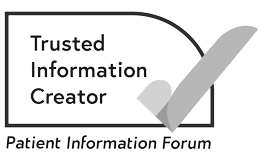Superior vena cava obstruction (SVCO)
Superior vena cava obstruction (SVCO) is a blockage of a large vein in the chest called the superior vena cava (SVC).
What is a superior vena cava obstruction (SVCO)?
The superior vena cava (SVC) is a large vein that carries blood from the upper half of the body straight to the heart. It lies in the middle of the chest, behind the breastbone (sternum).
Superior vena cava obstruction (SVCO) happens when something blocks the blood flow along the SVC. The walls of the SVC are thin and can easily become squashed or compressed.
SVCO is sometimes called superior vena cava syndrome.
Causes of SVCO
Most cases of SVCO are caused by lung cancer. The cancer may press directly on the SVC. Or it may spread to the lymph nodes nearby, which become swollen. These may then press on the SVC and block the flow of blood along the vein.
There are other possible causes of SVCO:
- Other cancers affecting the lymph nodes in the chest. These include lymphomas and testicular, breast, bowel or gullet (oesophageal) cancers.
- A blood clot forming in the vein and blocking the blood flow. This can happen if you have had a central line put into the vein – for example, to give you chemotherapy.
Symptoms of SVCO
Symptoms of SVCO are caused by the blood flow to the heart being blocked. This causes increased pressure in the head, neck and arms.
Symptoms can develop quickly over a few days or over a few weeks.
The most common symptoms are:
- breathlessness, because of swelling around the windpipe (trachea)
- headaches or feelings of fullness in the head, which get worse when you lean forward or bend over
- facial swelling, with changes to your natural skin colour and appearance (complexion)
- changes in your eyesight
- a swollen neck
- swollen arms and hands
- visible swollen veins on the chest
- feeling dizzy.
If you have any of these symptoms it is important to contact your cancer doctor or nurse straight away. SVCO needs to be treated quickly.
Managing symptoms of SVCO
The symptoms of SVCO can be distressing, but they can usually be quickly controlled.
You may be given oxygen to improve your breathing. You may also have drugs such as:
- painkillers, to ease any pain
- water tablets (diuretics) to get rid of extra fluid
- sedatives, to help you relax.
Steroids
Your doctor may give you high doses of a steroid drug called dexamethasone. This will help reduce pressure and swelling around the blood vessel. It will also improve symptoms such as breathlessness. The dose will be reduced gradually after you have had other treatments.
Bed rest
Your doctor will usually advise bed rest, with the head of the bed raised. If you are breathless, sitting in an upright position might be more comfortable.
Diagnosing SVCO
The most common test to diagnose SVCO is a chest x-ray or a CT scan. You might also have other tests, such as an MRI scan or an ultrasound.
Treating SVCO
There are different ways of treating SVCO. The treatment you have will depend on how severe the symptoms are and the type of cancer you have.
Stents
A stent is a small tube that can be put into the SVC to keep it open. This lets the blood flow through. Not everyone will be able to have this treatment. For example, a stent may not be suitable for people who have a blood clot. Your doctor can tell you if it is the best option for you.
A doctor called a radiologist will usually put the stent in using local anaesthetic so you do not feel anything in the area being treated. They may also give you medicine to help you relax. They pass a narrow tube called a catheter up through a blood vessel, for example at the top of the leg. They pass the stent through the catheter using x-ray images to guide it to the blockage in the vena cava.
You may have a stent as the first treatment for SVCO. It relieves symptoms quickly. You may also have a stent if SVCO comes back after having radiotherapy or chemotherapy.
Radiotherapy
Radiotherapy uses high-energy x-rays to destroy cancer cells, while doing as little harm as possible to normal cells.
Radiotherapy is directed at the tumour from outside the body. This is called external radiotherapy. You might have a short course of radiotherapy to reduce the area of cancer, causing pressure on the vein.
Chemotherapy
Chemotherapy uses anti-cancer (cytotoxic) drugs to destroy cancer cells. It is sometimes used to treat SVCO where the tumours are sensitive to chemotherapy, for example with lymphoma or small cell lung cancer (SCLC).
Drugs to treat blood clots
Drugs called anti-coagulants can be used to treat SVCO caused by blood clots. These drugs help to prevent blood clots from forming. There are different drugs that can be used. If the blood clot is around a central line you may need to have the line removed. In this situation, your doctors will discuss other cancer treatment options with you.
Your feelings about SVCO
Having SVCO can be very worrying. But treatments will improve the symptoms you are having.
Your cancer team will give you support. Let them know how you are feeling. There may be different ways they can help you. Talking to your family and friends can also be helpful.
Macmillan is also here to support you. If you would like to talk, you can:
- Call the Macmillan Support Line for free on 0808 808 00 00.
- Chat to our specialists online
- Visit our lung cancer forum to talk with people who have been affected by lung cancer, share your experience, and ask your questions.
About our information
This information has been written, revised and edited by Macmillan Cancer Support’s Cancer Information Development team. It has been reviewed by expert medical and health professionals and people living with cancer.
-
References
Below is a sample of the sources used in our lung cancer information. If you would like more information about the sources we use, please contact us at informationproductionteam@macmillan.org.uk
National Institute for Health and Care Excellence (NICE). Lung cancer – Diagnosis and management. Clinical guideline 2019. Last updated 2023. (accessed Nov 2023) Available at: https://www.nice.org.uk/guidance/ng122
European Society for Medical Oncology (ESMO). Small-cell lung cancer: ESMO clinical practice guidelines for diagnosis, treatment and follow-up. 2021. (accessed Nov 2023). Available at: https://www.esmo.org/guidelines/guidelines-by-topic/esmo-clinical-practice-guidelines-lung-and-chest-tumours/small-cell-lung-cancer
European Society for Medical Oncology (ESMO). Early and locally advanced non-small-cell lung cancer (NSCLC): ESMO clinical practice guidelines for diagnosis, treatment and follow-up. 2017. eUpdate 01 September 2021: New Locally Advanced NSCLC Treatment Recommendations (accessed Nov 2023) Available at: https://www.esmo.org/guidelines/esmo-clinical-practice-guideline-early-stage-and-locally-advanced-non-small-cell-lung-cancer
European Society for Medical Oncology (ESMO). ESMO expert consensus statements on the management of EGFR mutant non-small-cell lung cancer. 2022 (accessed Nov 2023). Available at: https://pubmed.ncbi.nlm.nih.gov/35176458/
Date reviewed

Our cancer information meets the PIF TICK quality mark.
This means it is easy to use, up-to-date and based on the latest evidence. Learn more about how we produce our information.
The language we use
We want everyone affected by cancer to feel our information is written for them.
We want our information to be as clear as possible. To do this, we try to:
- use plain English
- explain medical words
- use short sentences
- use illustrations to explain text
- structure the information clearly
- make sure important points are clear.
We use gender-inclusive language and talk to our readers as ‘you’ so that everyone feels included. Where clinically necessary we use the terms ‘men’ and ‘women’ or ‘male’ and ‘female’. For example, we do so when talking about parts of the body or mentioning statistics or research about who is affected.
You can read more about how we produce our information here.





